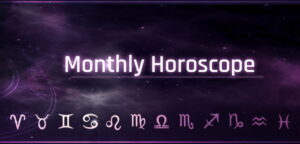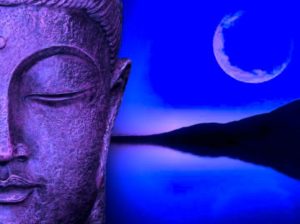Tao
Uncreated
(Quotations from The Tao Te Ching)
Look, it cannot be seen — it is beyond form.
Listen, it cannot be heard — it is beyond sound.
Grasp, it cannot be held — it is intangible.
These three are indefinable;
Therefore they are joined in one.
From above it is not bright;
From below it is not dark;
An unbroken thread beyond description.
It returns to nothingness.
The form of the formless,
The image of the imageless,
It is called indefinable and beyond imagination.
Stand before it and there is no beginning.
Follow it and there is no end.
Stay with the ancient Tao,
Move with the present.
Knowing the ancient beginning is the essence of Tao.
(14)
Tibetan Buddhism
Uncreated
(Quotations from Sogyal Rinpoche)
{Quoting Dudjom Rinpoche on the buddha-nature:} No words can describe
it
No example can point to it
Samsara does not make it worse
Nirvana does not make it better
It has never been born
It has never ceased
It has never been liberated
It has never been deluded
It has never existed
It has never been nonexistent
It has no limits at all
It does not fall into any kind of category
(p. 49)
ZEN
Uncreated
(Quotations from Bodhidharma)
… this mind, through endless kalpas without beginning, has never varied. It has never lived or died, appeared or disappeared, increased or decreased. It’s not pure or impure, good or evil, past or future. It’s not true or false. It’s not male or female. It doesn’t appear as a monk or a layman, an elder or a novice, a sage or a fool, a buddha or a mortal. It strives for no realization and suffers no karma. It has no strength or form. It’s like space. You can’t possess it and you can’t lose it. Its movements can’t be blocked by mountains, rivers, or rock walls… No karma can restrain this real body. But this mind is subtle and hard to see. It’s not the same as the sensual mind. Everyone wants to see this mind, and those who move their hands and feet by its light are as many as the grains of sand along the Ganges, but when you ask them, they can’t explain it. It’s theirs to use. Why don’t they see it?
… Only the wise know this mind, this mind called dharma-nature, this mind
called liberation. Neither life nor death can restrain this mind. Nothing can.
It’s also called the Unstoppable Tathagata, the Incomprehensible, the Sacred
Self, the Immortal, the Great Sage. Its names vary but not its essence.
(pp. 21-23)
Hindu
Uncreated
(Quotations from The Bhagavad Gita)
… the beginningless Brahman, … can be called neither being nor
nonbeing… It is both near and far, both within and without every creature; it
moves and is unmoving. In its subtlety it is beyond comprehension. It is
indivisible, yet appears divided in separate creatures. Know it to be the
creator, the preserver, and the destroyer. Dwelling in every heart, it is
beyond darkness. It is called the light of lights, the object and goal of
knowledge, and knowledge itself.
(BG 13:12, 15-17, pp. 170-171)
Islam
Uncreated
(Quotations from Abu Bakr Muhammad ibn al-`Arabi)
… in Ibn `Arabi’s own terminology Al-Lah is the Name which designates the
divine Essence qualified and invested with the sum of His attributes, whereas al-Rabb,
the Lord, is the personified and particularized Divine in one of its
attributes (hence the divine Names designated as so many “lords”, arbab).
(p. 122)
… Ibn `Arabi distinguishes between Allah as God in general and Rabb
as the particular Lord, personalized in an individualized and undivided
relation with his vassal of love. This individualized relationship on both
sides is the foundation of the mystic and chivalric ethic of the fedel
d’amore in the service of the personal Lord whose divinity depends on the
adoration of his faithful vassal… {It is the passion that the fedele
d’amore feels for his Lord which reveals the Lord to Himself.} And this
always individually, in an “alone to alone,” which is something very
different from universal logic or from a collective participation, because only
the knowledge which the fedele has of his Lord is the knowledge which
this personal Lord has of him.
(p. 94)
All {the divine Names} refer to one and the same Named One. But each
one of them refers to an essential determination, different from all the rest;
it is by this individualization that each Name refers to the God who reveals
himself to and by the theophanic imagination.
(p. 192)
… the Divine Being is not fragmented, but wholly present in each
instance, individualized in each theophany of His Names, and it is
invested in each instance with one of these Names that He appears as
Lord.
(p. 121)
Paraphrased: The devotee who is faithful to the divine Name that is
His Lord recognizes his Beloved in every Beloved and in every divine Name the
totality of Names, because among the divine Names there is a sympathetic union.
(p. 134)
The Names… have existed from all eternity: these Names are designated as
“Lords” (Arbab), who often have all the appearance of hypostases
though they cannot strictly be defined as such. We know them only by our
knowledge of ourselves (that is the basic maxim). God describes Himself to us
through ourselves. Which means that the divine Names are essentially relative
to the beings who name them, since these beings discover and experience them in
their own mode of being… Thus the divine Names have meaning and full reality
only through and for beings… in which they are manifested.
Likewise from all eternity, these forms, substrate of the divine Names, have
existed in the divine Essence (A `yan thabita). And it is these latent
individualities who from all eternity have aspired to concrete being in actu.
Their aspiration is itself nothing other than the nostalgia of the divine Names
yearning to be revealed. And this nostalgia of the divine Names is nothing
other than the sadness of the unrevealed God, the anguish He experiences in His
unknownness and occultation.
(pp. 114-115)
The “God created in the faith” manifests Himself no longer in
order to impose Himself on the faithful, but in order to express His limits,
for these limits are the condition which makes possible one among the
many divine epiphanies. The gnostic does not receive a ready-made Image of his
Lord, but understands Him in the light of the Image which in the course of his manajat,
his intimate dialogue, appears in the mirror of his heart as subtle organ.
(p. 270)
The image of the God whom the faithful creates is the Image of the
God whom his own being reveals… Thus it is psychologically true to say
that “the God created in the faiths” is the symbol of the Self. The
God to whom we pray can be only the God who reveals Himself to us, by us, and for
us, but it is praying to Him that we cause the “God created in the
faiths” to be himself enveloped in the Divine Compassion, that is,
existentiated, manifested by it. The theophanies of the “Gods”
manifested to the heart or to the faiths are all theophanies of the real One
God (Haqq Haqiqi). When we are the musalli, this must be borne in
mind; he who knows this is the gnostic who has untied the knot of closed,
limited dogmas, because for him they have become theophanic symbols.
(pp. 266-267)
Questioner:
How do you know God?
Abu Asa`id al-Kharraz:
By the fact that He is the coincidentia oppositorum.
Corbin’s commentary:
… the entire
universe of worlds is at once He and not-He (huwa la huwa). The God
manifested in forms is at once Himself and other than Himself, for since He is
manifested, He is the limited which has no limit, the visible which cannot be
seen. This manifestation is neither perceptible nor verifiable by the sensory
faculties; discursive reason rejects it. It is perceptible only by the Active
Imagination (Hadrat al-Khayal…) at times when it dominates man’s sense
perceptions, in dreams or better still in the waking state (in the state
characteristic of the gnostic when he departs from the consciousness of
sensuous things). In short, a mystic perception (dhawq) is required. To
perceive all forms as epiphanic forms (mazahir), that is, to
perceive through the figures which they manifest and which are the eternal
hexeities, that they are other than the Creator and nevertheless that they are
He, is precisely to effect the encounter, the coincidence, between God’s descent
toward the creature and the creature’s ascent toward the Creator. The
“place” of this encounter is not outside the Creator-Creature
totality, but is the area within it which corresponds specifically to the
Active Imagination, in the manner of a bridge joining the two banks of a river.
The crossing itself is essentially a hermeneutics of symbols …, a method of
understanding which transmutes sensory data and rational concepts into symbols
(mazahir) by making them effect this crossing.
(pp. 188-189)
Roman Catholic
Uncreated
(Quotations from Author of “The cloud…”)
God is neither soul nor angel … nor can He be described or understood …
He neither stands still nor moves … He is none of the things that have no
being, none of the things that have being… Nor is there any way by which we
can reach Him through reason or understanding…
(p. ?)
He comes down to our level, adapting His Godhead to our power to comprehend.
(p. 62)





